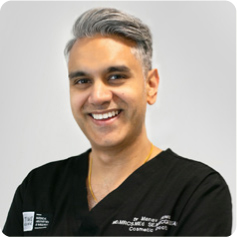

One of the most challenging parts of the patient journey is the consultation. If the practitioner carries this out correctly, the whole process can be extremely smooth and rewarding, with transformational results. However, a short or unstructured consultation could very easily lead to dissatisfaction for patients or the clinician and run the risk of complaints.
Another challenging aspect is online consulting. As many saw during the COVID-19 pandemic, there was a huge rise in online consultations, which proved to be extremely useful when following up on patients. However, this did lead to its own challenges.
This article will be discussing the different aspects of the consultation in medical aesthetics and ways to enhance it, as well as some of the challenges.
Medical model
There are numerous medical models of consulting described in the literature, such as the Calgary–Cambridge and Pendleton models (Denness, 2013), and many of us from the NHS have retained this way of consulting.
Ultimately, clinicians ensure they obtain their patient's presenting complaint, history of presenting complaint, medical history, aesthetic history, surgical history, medications, drug allergies and social history and complete an examination, followed by a management plan, treatment and follow-up.
Aesthetic practitioners are very fortunate in that they can dictate their own consultation time and structure within their own clinics while maintaining gold standards, and there are several areas that can be added and expanded upon to enhance consultations and improve the patient journey.
Patient research
The patient journey starts well before they enter the clinic. Many patients have researched treatments prior to attending, so the information on websites and social media certainly plays a role in educating patients and starting to build a rapport.
Social media allows practitioners to share research and education (Allergan, 2019). It also gives patients the opportunity to get to know us a little before attending the clinic, so bear this in mind while creating the next Instagram reel or TikTok video, as it is helpful for patients to have seen who will be treating them before attending.
» As highly trained healthcare professionals, clinicians have spent thousands on education and training, so this raises the question of whether care should be provided without practitioners being financially reimbursed «
Aesthetic interest questionnaire
Once a patient has decided to come in for a consultation, providing them with an aesthetic interest questionnaire prior to attending the clinic is a great way of finding out more about their requirements, as well as opening the door to other treatments that are offered. Many have found it challenging to offer alternative treatments to patients while in the consultation due to the fear of being deemed as selling; however, this is a great way to break the ice and discover what they may already know.
Understanding where a patient is on their aesthetic journey can be extremely helpful. For example, if they are very early on and have not spent time researching treatments, practitioners must provide an educational approach to the consultation, as opposed to a patient who has been having treatments for several years and is well acquainted with treatments.
Patient motivations
Understanding the patient's ‘wants’ and bridging this with what they ‘need’ can be one of the most challenging parts of the patient journey. Getting this right can lead to huge satisfaction for both the patient and practitioner. If the practitioner gets this wrong, patients can be extremely underwhelmed with results or if they receive a different result than they expected.
It is important to take the time to fully understand the results they desire, and then ensure they can be met. One tip is to gently lower expectations, as this reduces the risk of underwhelming results for the patient.
It is equally important to understand why patients would like treatments. For example, they may be getting married, coming out of a divorce and seeking a new partner or looking for a new job and feel a more youthful appearance will help with the competition. There are numerous reasons for seeking treatment, and it is important to understand why, as practitioners may tailor the consultation and treatment plan depending on this. If there is a short time period, the treatment sessions could be spaced closer together. However, if the patient has just undergone a difficult life experience, a large treatment plan may not be the best option immediately.
Building a good rapport and trust with patients is fundamental to the practitioner–patient relationship and can be done by giving them the time to talk about their concerns, active listening, probing and using open body language. Once trust is gained, clinicians can continue to determine the true motivations of their patients, which allows them to ensure the best decision is made for the patient's benefit.
Body dysmorphic disorder
It has been shown that 13.1% of aesthetic patients have body dysmorphic disorder (BDD) (Dey, 2015). BDD is a psychiatric disorder characterised by a distorted perception of the patient's own body image (Higgins, 2017), and it is the clinician's responsibility to ascertain if this is the case during consultations. There is a range of scoring systems and questioning that can be used, and if the practitioner feels that a patient has this disorder or is exhibiting symptoms, then they should not be treated. Instead, clinicians should signpost or refer them to a specialist to help them in the appropriate manner.
Occasionally, a patient may purposely not divulge that they have BDD, or the practitioner may feel there is a discrepancy between what they are saying and their body language, for example. There are usually signs that the patient is not being completely honest regarding this or other treatments they may have had, for example. It is certainly important to try to pick up on these signs and probe accordingly. If there is any doubt, treating the patient could lead to difficulties down the line, and declining to treat and trying to educate why they will not be treated may be a better option.
Saying no
There are many instances where patients are not suitable for treatments, and it is very important that clinicians do not just go ahead and treat them. An example may include a patient who requests tear trough filler when they have no volume loss, but, instead, are suffering from hyperpigmentation.
Remember: as healthcare professionals (HCPs), aesthetic clinicians have a duty of care (General Medical Council (GMC), 2013) to treat their patients with their best interests first and foremost. It is challenging to say no, especially with a persistent or persuasive patient; however, when the practitioner feels it is not right to treat, they must educate their patients as to why, and stick with their decision. Helping them to understand why it is not in their best interest helps to diffuse a potentially difficult situation and justify the decision. It also may prevent them from going to another practitioner and requesting the same treatment.

Examination
A thorough and holistic examination is required to fully appreciate the whole face and diagnose numerous conditions that can be treated if present. A structured and systematic approach is useful, as it allows the practitioner to examine all aspects of the face and create a structured and holistic treatment plan for their patients. This allows the clinician to present all the areas they may be able to treat and help to optimise the patient's results.
It is important to consider all layers of the face, as, with many patients, a multi-layered approach will be required. Aids such as a facial analysis machine may help to diagnose conditions that are difficult to see, and this imagery can be presented to patients.
Patient education
Education is key, and explaining a diagnosis (for example, that nasolabial lines are generally caused by loss of fat pad and one volume to the midface) will help patients to understand what the real issue is. Then, the practitioner can move on to the treatment plan that will address those problems.
Using an anatomical model or app is a great way to educate patients as to what is happening under their skin and leading to their concerns. It helps them to visualise the diagnosis and justify why a treatment plan has been recommended.
Taking photos of patients in the consultation and discussing them can also be much more powerful than using a mirror, as, when looking in a mirror, we are much more familiar with the image (Russell, 2021). However, when looking at a picture, we can be more objective, and therefore see the positive and negative aspects that may have not been originally apparent. This can also allow practitioners to visually describe exactly where they would treat and explain the benefits in greater detail.
Treatment planning
It can be helpful to take the time to go through the treatment plan with the patient, taking into consideration their timeframe and motivations, as well as the diagnoses and recommended treatment options. Creating a holistic plan with sessions, for example, a treatment every month, can help the patient to plan for the upcoming months regarding their time and budget.
Creating a holistic treatment plan covering all aspects of their care will be beneficial to patients. A holistic plan could cover volume loss, wrinkle relaxation, skin optimisation and any supplements or devices recommended.
Most patients will attend a consultation with several concerns, and a holistic approach will take those into account, optimise results and even prevent conditions from occurring.
Clinicians can create a plan for their initial treatments or, even better, provide them with a 12-month plan, which would help them to understand when certain treatments would need to be repeated. Again, this aids their decision-making process when considering treatments that need maintenance.
Cooling-off period
The patient should be provided with all the information they require about the treatment options and brought back for treatment later, allowing them a cooling-off period (GMC, 2016). This allows time for patients to research, question and consider the treatments, including their benefits and risks, and to be completely certain that it is the correct plan for them.
Providing a written treatment plan for the patient helps with clarity and transparency, as well as allowing them to research anything they require. It is also useful to provide written information on the treatments, such as the mechanism of action, benefits, the procedure itself and the risks, including downtime.
Consent
Consent is an important part of the consultation process, as the practitioner needs to ensure the patient is fully aware of the benefits and risks of treatments prior to undergoing any procedures.
It is useful to cover these in detail during the initial consultation, provide written information and carry out a formal consent just prior to treatment. This will allow time to understand and retain the information and make an informed decision. (GMC, 2016).
Patients and practitioners should cover the consent form in detail, provide time to answer any questions and both sign the form. This is a legal document, and it is an important part of the patient records.
Consultation fees
Many practitioners within the medical aesthetics sector are divided on the topic of whether patients should be charged for the consultation. A common trend is to provide free consultations when starting and to begin charging once more experience has been obtained. However, is this right?
As highly trained HCPs, clinicians have spent thousands on education and training, so this raises the question of whether care should be provided without practitioners being financially reimbursed. As an example, in the NHS, there is no transaction for a consultation with a patient; however, employees are compensated for their time with a monthly paycheque, or on an hourly basis if taking ad hoc shifts.
It is certainly worth considering this in your business plan. For example, whether treatment prices take into consideration a free consultation.
Online consultations
Online or virtual consultations became popular during the COVID-19 pandemic when follow-ups were required with patients, as well as new and remote consultations prior to attending the clinic, with the aim of reducing the time that patients were in the clinic, thus reducing exposure risk.
Since clinics have reopened, many continue to perform online consultations, which can be convenient for patients, as they can log on from wherever they are. However, online consultations do pose several challenges, including preventing a full and detailed examination, so this does need to be explained to patients, as a further examination in person may be required in person.
Conclusion
Taking the time to conduct a thorough consultation is key to understanding the patient's concerns and motivations, and performing a systematic examination allows the clinician to educate patients and create holistic treatment plans with transformational results.
Using aids within the consultation can help patients to understand the cause of their concerns and justify the treatment plan.
Ensuring screening of BDD and correctly consenting patients will ensure they are always receiving gold standard care and being treated in their best interests.
A thorough consultation requires time, and practitioners must value their time, so a consultation fee should be considered.



